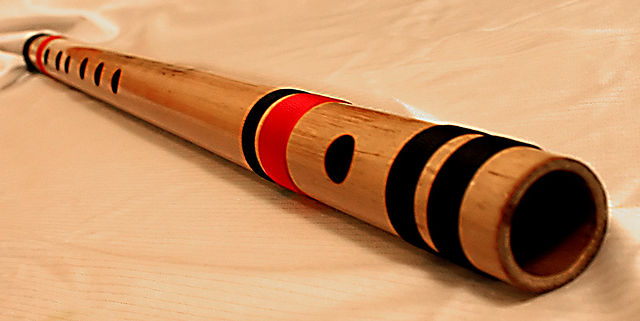A bansuri is an ancient side-blown bamboo flute originating from the Indian subcontinent. It is an aerophone produced from bamboo and metal like material used in many Nepali Lok songs. A bansuri is traditionally made from a single hollow shaft of bamboo with seven finger holes. Some modern designs come in ivory, fiberglass and various metals. The six hole instrument covers two and a half octaves of music. The bansuri is typically between 30 centimetres (12 in) and 75 centimetres (30 in) in length, and the thickness of a human thumb. One end is closed, and few centimeters from the closed end is its blow hole. Longer bansuris feature deeper tones and lower pitches. The traditional design features no mechanical keys, and the musician creates the notes they want by covering and uncovering the various finger holes.
A 23-inch-long bansuri bamboo flute for concerts.
Krishna with a bansuri is sometimes referred to as Venugopal.
All scales of Bansuris in a set
Bansuri is traditionally made from bamboo.
The bamboo flute, especially the bone flute, is one of the oldest musical instruments known. Examples of Paleolithic bone flutes have survived for more than 40,000 years, to be discovered by archaeologists. While the oldest flutes currently known were found in Europe, Asia too has a long history with the instrument that has continued into the present day. In China, a playable bone flute was discovered, about 9000 years old.
Krishna playing flute with his herd of cows in Bucesvara Temple, Koravangala. 12th century.
A group of bansuri flutes, grouped low pitched to high pitched.
Musician playing a large bansuri; the larger instrument is lower toned than a smaller bansuri.
Public performance by Newar musicians with flutes, Lalitpur.







